

— Blogs —
—Products—
 Consumer hotline +8618073152920
Consumer hotline +8618073152920 WhatsApp:+8615367865107
Address:Room 102, District D, Houhu Industrial Park, Yuelu District, Changsha City, Hunan Province, China
Product knowledge
Time:2025-11-24 16:58:47 Popularity:7
Meteorological monitoring equipment refers to instruments that continuously track atmospheric parameters such as temperature, humidity, atmospheric pressure, wind speed, wind direction, precipitation, and light intensity, then transmit data in real time to terminals or cloud platforms. It provides accurate, reliable data support for weather forecasting, agricultural management, transportation, aviation, aerospace, scientific research, and more.
Beyond being a research tool, it is critical infrastructure for public safety and productive activities. Long-term data accumulation and trend analysis enable weather change prediction, disaster risk assessment, and optimized resource allocation.
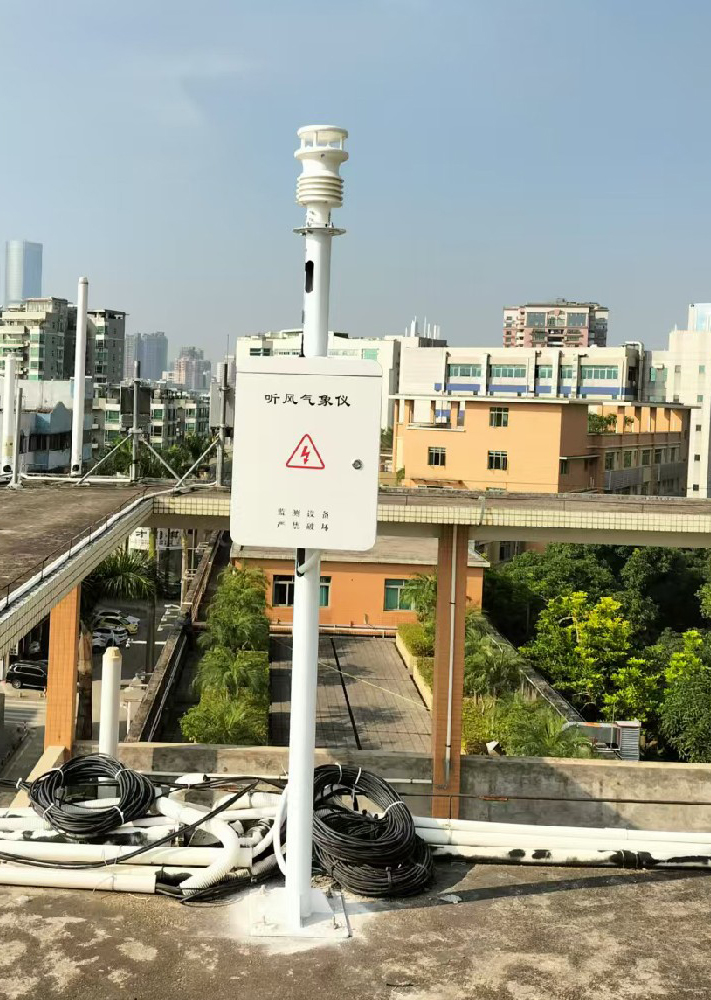
The core operation relies on coordinated multi-sensor technology:
1. Temperature & Humidity Sensors: Resistance, capacitive, or semiconductor elements convert environmental changes into electrical signals.
2. Atmospheric Pressure Sensors: Piezoresistive or capacitive principles with analog/digital output.
3. Wind Speed & Direction Sensors: Ultrasonic time-of-flight (ToF) technology (no moving parts) or mechanical rotation.
4. Precipitation Sensors: Tipping bucket, weighing, or optical methods.
5. Light Intensity Sensors: Photodiodes or photoresistors.
6. Data Acquisition & Transmission: All signals are processed by the acquisition module and sent via wired or wireless protocols.
Key advantage of ultrasonic stations: wind measurement without mechanical parts — eliminates friction, wear, and maintenance while improving accuracy and service life.
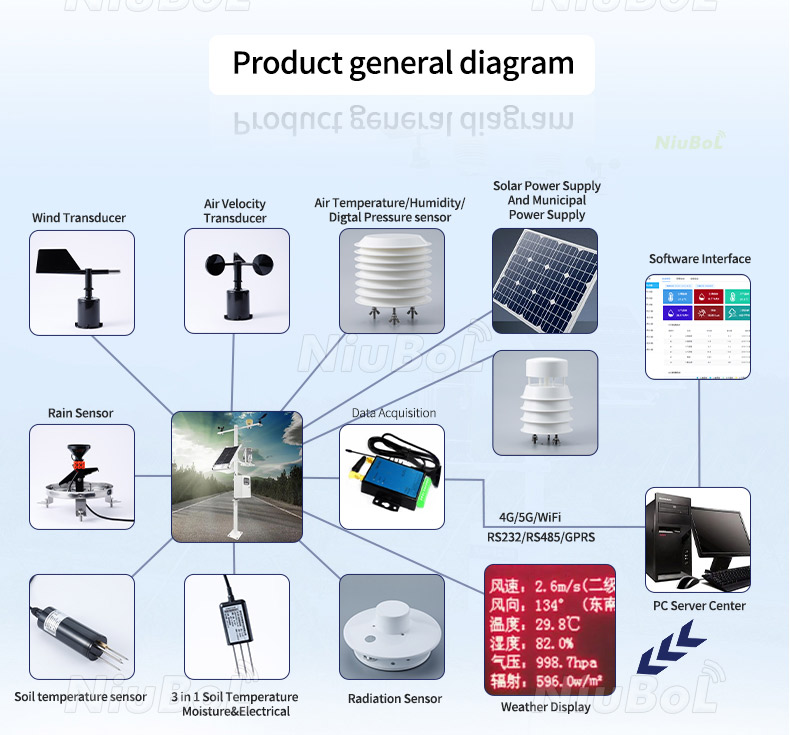
- Sensor Module: Integrated temperature/humidity, pressure, ultrasonic wind, precipitation, light intensity, and optional soil moisture sensors.
- Data Acquisition Unit: Supports analog/digital signals and protocols (Modbus, RS485, LoRa, 4G/5G).
- Electronic Compass Module: Automatic orientation calibration — no strict north alignment required.
- Protective Housing: UV-resistant engineering plastic, IP65/IP66 waterproof and dustproof.
- Mounting Structure: Lightweight, compact design for easy transport and installation (horizontal or slight tilt acceptable).
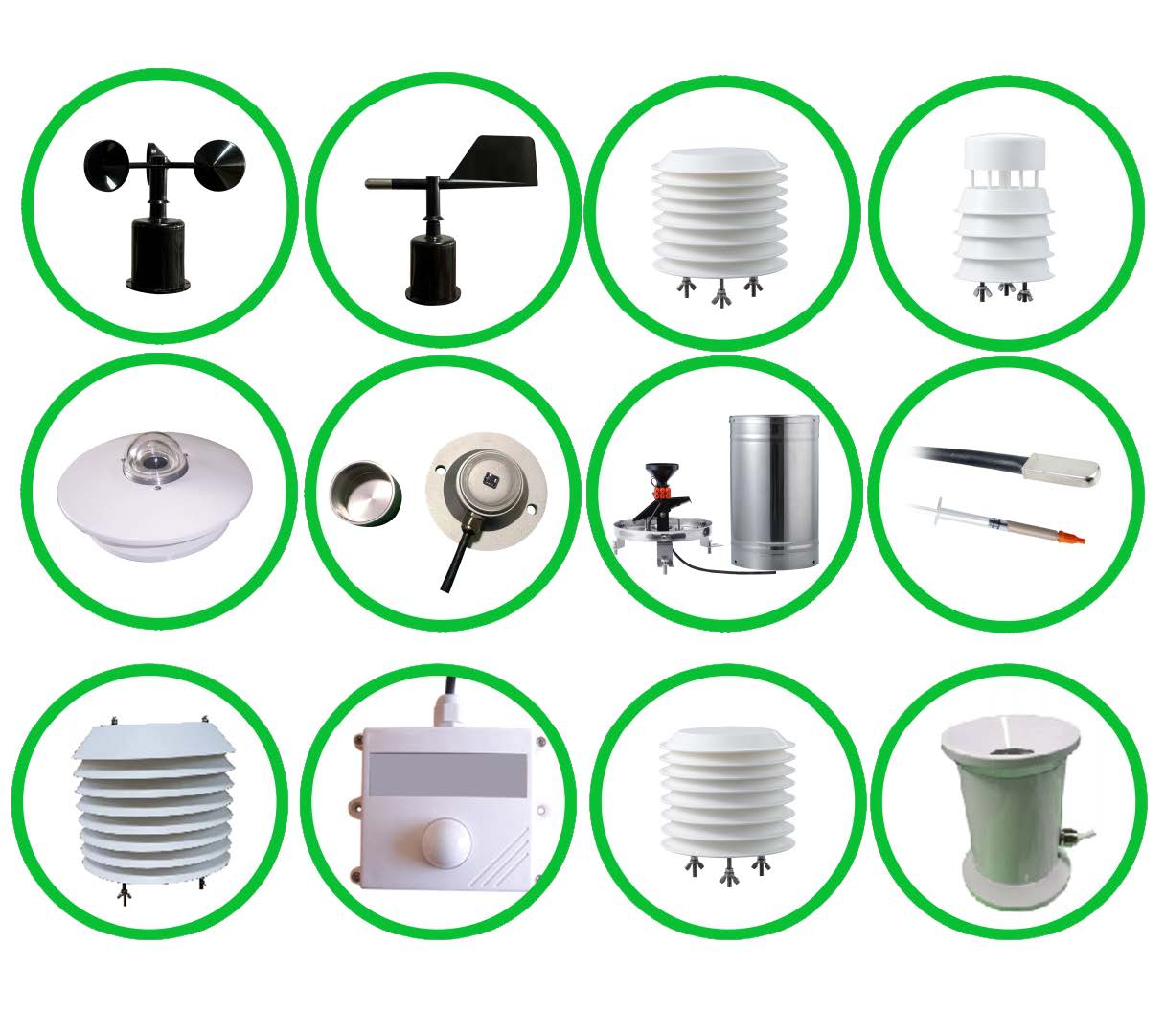
| Parameter | Measurement Method | Range | Resolution |
| Temperature | Resistance/Semiconductor | -40 ~ +80℃ | 0.1℃ |
| Humidity | Capacitive | 0 ~ 100% RH | 1% RH |
| Atmospheric Pressure | Piezoresistive/Capacitive | 10 ~ 1100 hPa | 0.1 hPa |
| Wind Speed | Ultrasonic Time-of-Flight | 0 ~ 60 m/s | 0.1 m/s |
| Wind Direction | 3D Ultrasonic Vector Analysis | 0 ~ 360° | 1° |
| Precipitation | Tipping Bucket/Optical | 0 ~ 500 mm/h or 0 ~ 4mm/min | 0.1 mm |
| Light Intensity | Phot diode | 0 ~ 200,000 lux | 10 lux |
| Soil Moisture | Capacitive/Resistive | 0 ~ 100% VWC | 0.1% |
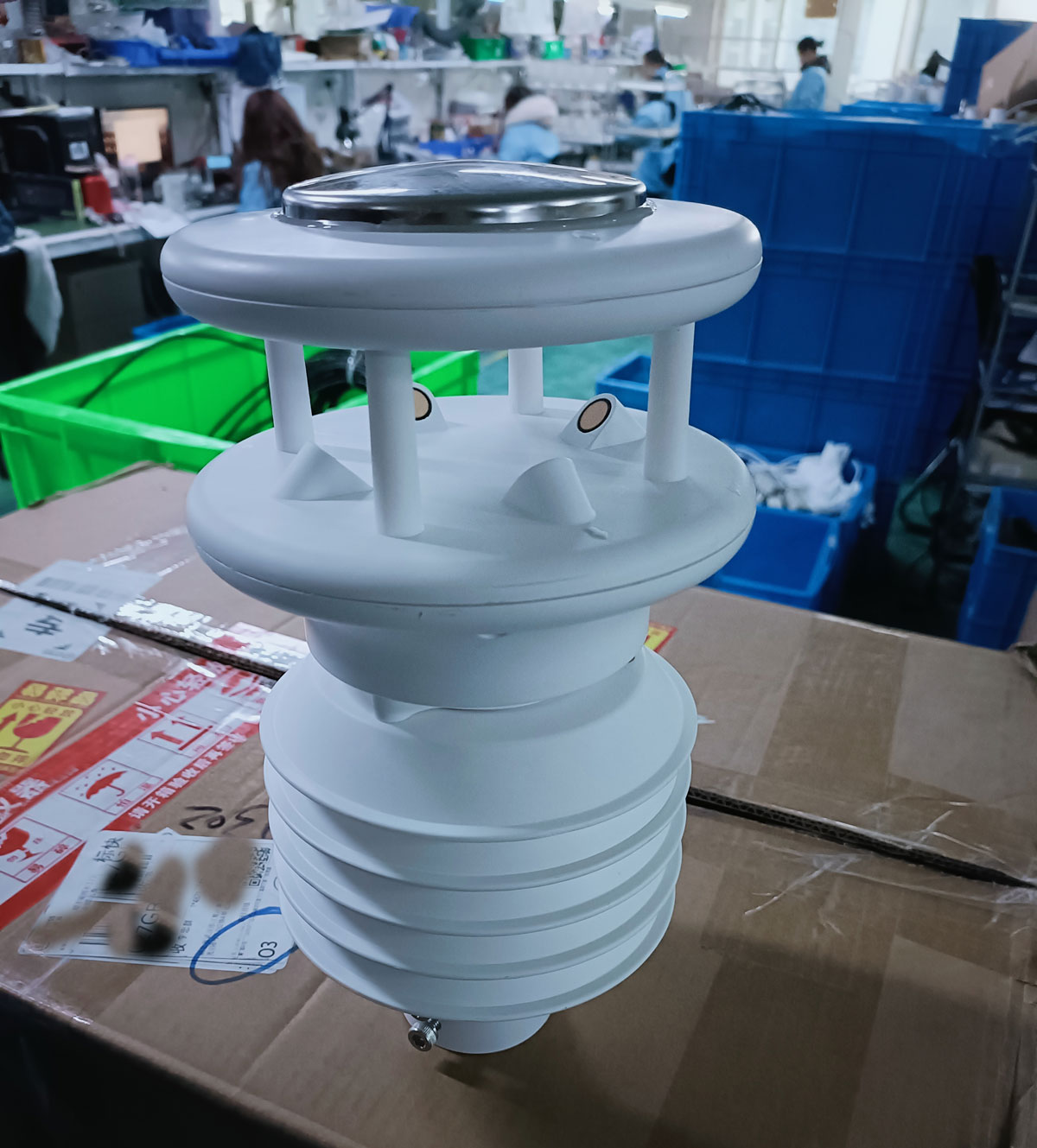
1. Analog: 4–20 mA, 0–5 V (for PLC and local systems)
2. Digital: RS485, Modbus RTU
3. Wireless: LoRa, 4G/5G (unlimited range with cellular)
4. Data Interfaces: HTTP, MQTT, API (easy third-party integration)
- Keep clear of buildings, trees, and obstacles to ensure accurate wind and light measurements.
- Precipitation sensor must remain level.
- Temperature/humidity sensors should be shielded from direct sunlight (use radiation shield).
- Soil sensors: burial depth 5–30 cm based on crop root zone.
1. Secure to sturdy pole/mount and ensure level.
2. Activate electronic compass for auto-calibration.
3. Connect power and data cables to gateway or terminal.
4. Perform full system test and verify data reaches monitoring platform.
| Symptom | Possible Cause | Troubleshooting Method |
| No data output | Power failure/loose wiring | Check power supply and connections |
| Abnormal wind readings | Blocked airway/sensor failure | Clean airway or replace sensor |
| No rainfall response | Tipping bucket jammed/dust | Clean bucket or optical sensor |
| Abnormal temp/humidity | Interference/sensor aging | Check location or replace sensor |
| Data delay | Unstable communication | Check network and acquisition module |
| Abnormal soil moisture | Incorrect burial depth/poor contact | Adjust depth, clean sensor |
| Abnormal light reading | Obstruction or dust | Clean sensor, adjust angle |
| Unstable power | Voltage fluctuation | Use stabilized power supply or UPS |
| Device offline | Weak signal/interference | Reposition antenna or add gateway |
| Data fluctuation | Sensor aging/sudden environment change | Check sensor status, eliminate interference |
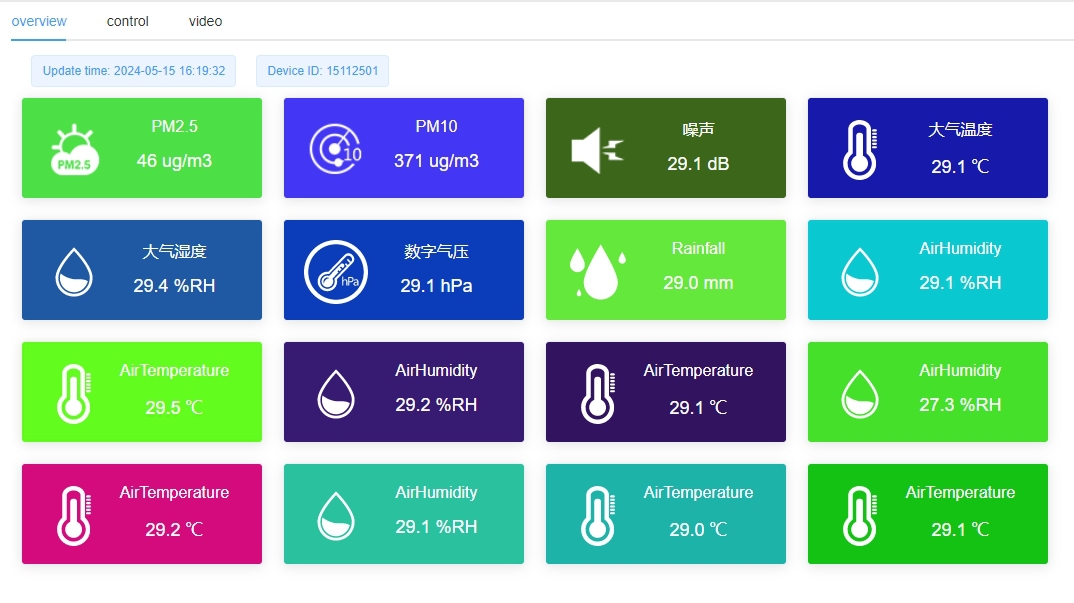
- Agriculture: Predict rainfall and temperature for precision irrigation, fertilization, and harvesting.
- Transportation: Monitor road/bridge conditions to prevent icing and high winds.
- Aviation: Provide real-time wind and pressure data for airport safety.
- Marine Monitoring: Track coastal wind and waves for shipping and fisheries.
- Scientific Research & Education: Field experiments and campus weather observation.
1. Required parameters and sensor integration
2. Environmental resistance (waterproof, dustproof, corrosion)
3. Compatibility with existing monitoring systems
4. Communication range needs
5. Ease of maintenance (modular design preferred)

| Feature | Ultrasonic Compact Station | Mechanical Station |
| Wind Measurement | Ultrasonic (no moving parts) | Cups & vane |
| Installation Alignment | Horizontal only | Must face north |
| Data Transmission | Wired + Wireless | Mostly wired |
| Environmental Resistance | High | Medium |
| Accuracy | High | Medium |
| Maintenance Frequency | Very low | High |

Up to ±0.1 m/s.
Yes — IP65/IP66 enclosure, fully waterproof and dustproof.
No — built-in electronic compass auto-calibrates.
Wired >1000 m; 4G/5G has virtually unlimited range.
4–20 mA, 0–5 V, RS485, Modbus, LoRa, 4G/5G, HTTP/MQTT/API.
Use radiation shield or white reflective hood.
5–30 cm depending on crop root zone.
Ultrasonic wind needs none; other sensors recommended annually.
Check power, wiring, protocol settings, and signal strength.
Yes — supports Modbus, HTTP, and API.
CE, ISO9001, RoHS, and calibration certificates.
The ultrasonic compact weather station is a highly integrated, intelligent monitoring solution that delivers stable, high-precision meteorological data for agriculture, transportation, aviation, marine, and scientific applications through advanced multi-sensor technology and reliable transmission. Its compact size, durability, easy installation, and near-zero maintenance give it clear advantages in real-world use. Proper selection, scientific installation, and routine care maximize its value in precision weather monitoring and decision support. With continued advances in IoT and big-data analytics, ultrasonic weather stations will become even smarter, providing society with more accurate meteorological foundations for production, public safety, and scientific exploration.
NBL-W-21GUWS-Ultrasonic-Wind-speed-and-direction-Sensor.pdf
NBL-W-61MUWS-Ultrasonic-Weather-Station-Instruction-Manual.pdf
NBL-W-71MUWS-Micrometeorological-Sensor-Operating-Instructions.pdf
Prev:Technical Analysis and Application Guide for Weather Monitoring Stations and Weather Monitors
Next:Application and Impact of Automatic Weather Stations in Forestry
Related recommendations
Sensors & Weather Stations Catalog
Agriculture Sensors and Weather Stations Catalog-NiuBoL.pdf
Weather Stations Catalog-NiuBoL.pdf
Related products
 Combined air temperature and relative humidity sensor
Combined air temperature and relative humidity sensor Soil Moisture Temperature sensor for irrigation
Soil Moisture Temperature sensor for irrigation Soil pH sensor RS485 soil Testing instrument soil ph meter for agriculture
Soil pH sensor RS485 soil Testing instrument soil ph meter for agriculture Wind Speed sensor Output Modbus/RS485/Analog/0-5V/4-20mA
Wind Speed sensor Output Modbus/RS485/Analog/0-5V/4-20mA Tipping bucket rain gauge for weather monitoring auto rainfall sensor RS485/Outdoor/stainless steel
Tipping bucket rain gauge for weather monitoring auto rainfall sensor RS485/Outdoor/stainless steel Pyranometer Solar Radiation Sensor 4-20mA/RS485
Pyranometer Solar Radiation Sensor 4-20mA/RS485
Screenshot, WhatsApp to identify the QR code
WhatsApp number:+8615367865107
(Click on WhatsApp to copy and add friends)
